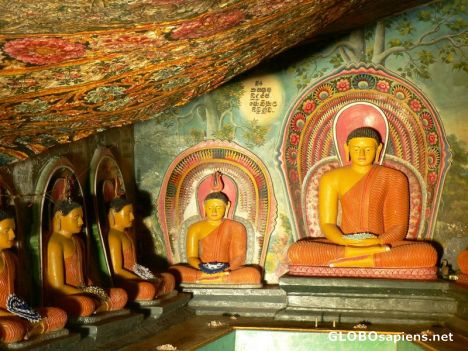Adam's Peak (also
Adam's Mount; Sinhalese
Samanalakanda - සමනළ කන්ද "butterfly mountain", Tamil
Sivanolipatha Malai - சிவனொலி பாதமலை)
world says that the footprint mark is the left
foot of the Buddha, left behind as he strode away,
T
hough not the highest mountain of Sri Lanka, the striking pyramid of
Adam's Peak (7,360 ft) is certainly the most remarkable. A depression in the rocky summit resembles a huge footprint, which has been venerated as a sacred sigh from remote antiquity. This was identified by Buddhists as the Buddha's footprint, by Hindus as that of Shiva, and by Muslims as Adam's. Later the Portuguese attributed it to St. Thomas the Apostle.


